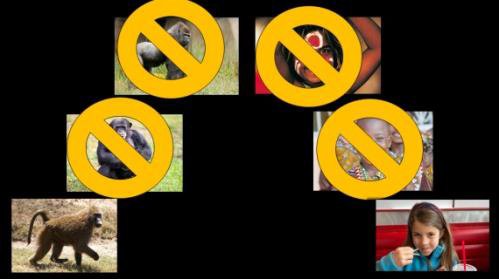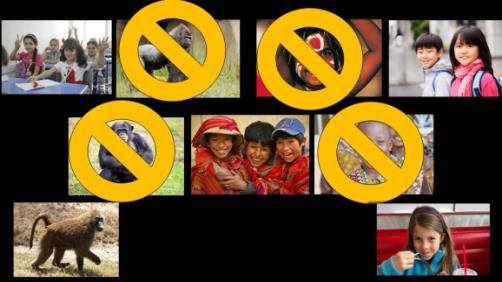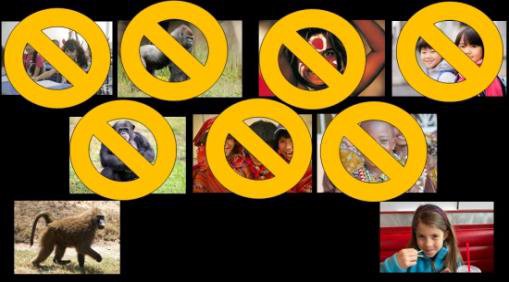
Where Did the Idea of Multiple “Higher and Lower Races” Come From?
How many races there are, names of races, evolution-inspired racism, and the solution to racism in the gospel of Jesus Christ
Racism is rampant all over the world. I’ve been to Peru, Australia, Sweden, the UK, Canada, Mexico, Turks, Caicos, and in my own “backyard” in the U.S. I’ve even had people be racist to me to my face without cause or warrant.
One thing that can be said of each of these places and peoples is that racism comes in many different forms—some of which may be surprising. Another thing I realized is that many people who truly believed they were not racist were often very racist (e.g., people who attack a particular “race” in the name of “anti-racism”).
But here is the thing I learned the most: to be racist, one must first *assume* there are different “races.”
How Many Races Are There?
“How many ‘races’ are there?” I once asked this question in a jail where I was ministering. I was going to immediately give the inmates an answer (i.e., it was a rhetorical question of sorts), but they insisted on trying to work it out and were totally engaged in the subject. So, in my lecture, I stopped and gave them some time to work it out. After about a minute or so of working together, they concluded that there were about 20–30 “races.”
I said, “Nope, there is only one race—the human race.” I knew this would be a shock to them because they were taught the same religion I was taught in public schools—a Darwinian evolutionary worldview, which is a form of secular humanism1 based on atheism (i.e., no God), materialism (matter and energy are all that exist; nothing immaterial, like God, exists), naturalism (nature is all that exists, no spiritual realm or supernatural), and so forth.
But according to God’s Word, there is one race: Adam’s race, which is also called the “human race,” “race of man,” or simply “mankind.” We are all descendants of Adam and Eve—the first man and woman (1 Corinthians 15:45–47; Genesis 3:20). This means we are all made in the image of God (Genesis 1:26–27, 9:6) and have eternal value because we are made in the likeness of our eternal God. It also means we are all related and are all part of that singular human race.
But according to God’s Word, there is one race: Adam’s race, which is also called the “human race,” “race of man,” or simply “mankind.” We are all descendants of Adam and Eve—the first man and woman (1 Corinthians 15:45–47; Genesis 3:20).
In the evolutionary religion, there are multiple “races” of man. Early evolutionists were arguing over how many “races” of man there were. Some entertained numbers as high as these inmates, but most settled [on] around four to five “races,” sometimes including one of these three:
- American Indians/Native Americans/Americanae, who were seen as “Red race”
- Esquimaux/Lapps, which included the far northern peoples (polar group) in Siberia as well as the Eskimos and Algonquians
- Malayan/Malaicae, which included many Southeastern Asian and Pacific Islander (i.e., the “Brown race”)
But usually, most evolutionists had accepted these four primary “races”:
- Caucasian/Caucasiae (Europeans; “White race”)
- Mongoloid/Mongolicae (Asians; “Yellow race”)
- Negroid/Aethiopicae (Ethiopians/Africans; “Black race”)
- Australoid (Australian Aborigines)
I don’t like these terms, but because evolutionists and their precursors use them, I will too for educational purposes. Interestingly, many people classified within these groups didn’t always fit neatly into these categories, but nevertheless, evolutionists used prototypes for their generalized racial divisions.
Regarding the Names
The name Caucasian is still used today on many government forms that ask which “race” you are. It is a name that comes from the Caucasus mountains between the Black Sea and Caspian Sea. Many European immigrants came via that route as the Japhetic people (descendants of Noah’s son Japheth) from Babel and settled into Europe and north Asia.2
The name Mongoloid comes from the same root as Mongols and Mongolia. Their peoples conquered much of southern and central Asia and East Asia. At some points their influence extended into the Middle East and Europe.
Negroid was often denoted as “Ethiopian” in much older literature. Ethiopians (or Cushites, named for Noah’s grandson Cush3) dominated much of East, Central, and Southern Africa and were seen as a prototype African. The name Negroid and its variants come from the Latin name for black and is still reflected in many Romance languages (Latin-based languages).
| Language | Word for Black | |
|---|---|---|
| 1 | Latin | Niger or Nigrum |
| 2 | Spanish | Negre |
| 3 | Galician | Negro |
| 4 | Italian | Nero |
| 5 | Romanian | Negru |
| 6 | Portuguese | Negro |
This term was never originally meant as a derogatory term but rather as a descriptive term. Sadly, in modern use, it has been used in offensive ways. There are still cases where we see a reflection of it being used in respectable ways such as the Negro Baseball League, founded by Andrew “Rube” Foster, and this historical league is still honored today for overcoming adversity.
This term was never originally meant as a derogatory term but rather as a descriptive term. Sadly, in modern use, it has been used in offensive ways.
Australoid comes from the Latin root for southern (australis) that is still used for the continent and country of Australia as well as Austronesia (think of the southern Pacific Islanders). The name still encompasses the original inhabitants of Australia (Australian aborigines) and many people in the Pacific and the islands of southern Asia (Austronesians). This is not to be confused with the root word for Austria in central Europe, which is derived from Österreich, an old German word for eastern realm.
Was the Idea of Different “Races” Unique to Evolutionists?
Was the idea of different “races” unique to evolutionists? No, it wasn’t. There were precursors to the evolutionary understanding of “race.” Prior to Carl Linnaeus (d. 1778), people were not categorized by the modern evolutionary understanding of “race.” But people were largely recognized as tribes, tongues, peoples, cultures, nations, and so forth, and rightly so. The modern evolutionary ideas of multiple higher and lower “races” had not been popularized yet.
When the term race was used, it was in the context of a people who were descended from a particular person. The term itself was used differently (i.e., a different definition)—I’ll get to that in a moment. But instead of one primary race (Adam’s Race) with subsequent breakdowns into people groups (English, French, German, etc.), there was a movement that started classifying people based on how they looked.
Around 1750, Georges Buffon, a French naturalist, classed people into six groups—Lapps, Tartars (Mongolians), Europeans, Americans, south Asians, and Ethiopians (Africans).4
With the development of Carl Linnaeus’ classification system, definitions began to change to be more “definitive” as animals and plants were being grouped based on how they looked. The Latin words species and genus now took on new “scientific” definitions, as new definitions were emerging and old definitions were becoming antiquated. Linnaeus initially labelled four varieties within the human species in his early editions of his famous work, Systema Naturae (1758).
- Americanus
- Europeanus
- Asiaticus
- Afer or Africanus
There is debate over whether these classifications were based on looks or merely based on their location. Later, Linnaeus added an additional grouping called “Monstrosus,” which included what is informally dubbed as mythological humans and included giants. It was a “catch-all” category of other alleged human-like claims. Since this group was not part of their own continent, Linnaeus was likely indeed grouping people due to looks, similar in fashion to plants and animals in his system. Nevertheless, Linnaeus held that all people go back to Adam and Eve and that there was one race, but his groupings of man unlocked a door, as his views were prominent.
Later, an anthropologist, German professor Johann Friedrich Blumenbach (AD 1752–1840), decided to tackle these variations in man in more detail. Blumenbach was, and still is to this day, influential in the fields of anthropology (study of the history of mankind) and anatomy. He divided humanity into five “races” in 1779.5 His breakdown of “races” were as follows:
- Caucasian (Europe, Asia Minor, North Africa and West Asia)
- Mongolian (East, Central and Southern Asia)
- Aethiopian (Sub-Saharan Africa)
- American (Americas)
- Malayan (Southeast Asia and Pacific)
Note that Australia was just being mapped in the 1770s, and it was 1778 that saw the first European colony in Australia. So naturally there is no inclusion of Australian peoples in his classification since these people were not on Blumenbach’s radar at this point (in fact, “radar” hadn’t been invented yet either!).
Blumenbach’s view of racial division was not widespread, and it took time for his ideas to spread. But spread they did.
Blumenbach’s view also put the Caucasian, of which Blumenbach classified himself, as the standard for humanity where the other variations of man were seen as divergent lines, but not without their merits of course. Even though he held that all mankind should be under one species (with multiple “races”), his work sadly set the stage to open the door further for classifying people into evolutionary relationships later. Blumenbach’s view of racial division was not widespread, and it took time for his ideas to spread. But spread they did.
How Did the Word Race Change Meanings?
Returning to the changing definition of race, prior to Blumenbach, the word indicated a family of descendants. It could be specific or broad. For example, a broad definition indicates that all mankind is the one “race of Adam.” But more specifically, the Israelites could also be denoted in a more pointed way as descendants of the race of Abraham or the race of Israel/Jacob. They are a tribe, nation, or people.
Webster’s dictionary of 1828 defined race as:
The lineage of a family, or continued series of descendants from a parent who is called the stock. A race is the series of descendants indefinitely. Thus all mankind are called the race of Adam; the Israelites are of the race of Abraham and Jacob. Thus we speak of a race of kings, the race of Clovis or Charlemagne; a race of nobles, etc.6
So the term race had little to do with anything that could be construed as higher and lower evolutionary “races.” This also shows that Blumenbach’s view still hadn’t become a mainstream idea. Nevertheless, his view was floating around in academia, waiting to explode in the civil scene. The common understanding of race was still in place with the general population in the early to mid 1800s.
The point is that, historically, “races” meant something different from today. In short, there were the Irish race (the race of Magog), the German race (the race of Ashkenaz), the English race (also the race of Ashkenaz), the Egyptian race (the race of Mizraim), the Greek race (the race of Javan), the Chinese race (the race of the Sinites), the Ethiopian race (the race of Cush), the Israeli race (race of Jacob), and so on. These were just divisional groupings of people who collectively made up the one “human race”—all equal pieces of the same pie.
When Blumenbach redefined “race” based on his view of classifying humanity by features as opposed to their family descent, it really sparked a fire and changed the definition to be based on physical features (i.e., how you look—skin tone, hair type, eye shape, etc.). This is called racial anthropology.
There were others who commented on the racial anthropology movement, such as John Hunter, Charles White, Joseph Deniker, and Benjamin Rush. In some cases, these commentaries added fuel to the fire. But due to the lack of genetic understanding (which hadn’t been developed yet7), hosts of conjectures flooded the written literature to “understand” skin tone and features of various peoples—incorrectly, I might add. And although it took time, Blumenbach’s multiple race view really took a foothold in the academic world that led to Charles Darwin.
Racial Anthropology Is the Foundation for Scientific Racism/Biological Racism
Johann Blumenbach’s classification of man into “races” based on appearance led to biological racism, also called scientific racism. In the mid 1800s, Charles Darwin and Alfred Russell Wallace were both working on publications promoting an evolutionary worldview, but Darwin was a step ahead of Wallace—which is why most people know Darwin’s name and not Wallace’s.
In the mid 1800s, Charles Darwin and Alfred Russell Wallace were both working on publications promoting an evolutionary worldview, but Darwin was a step ahead of Wallace—which is why most people know Darwin’s name and not Wallace’s.
But it was these classifications by Blumenbach that Darwin (and other early evolutionists like Wallace, Thomas Huxley, and Ernst Haeckel) used to line up, with selected apes, as types of cousins on an evolutionary tree (see image for instance). It was here that the evolutionary concept of “higher and lower races” emerged in our society.

Image 1
Wallace, a British naturalist, said,
The mental requirements of the lowest savages, such as the Australians or the Andaman Islanders, are very little above those of many animals.8
Haeckel, a German zoologist and eugenicist, said,
At the lowest stage of human mental development are the Australians, some tribes of the Polynesians, and the Bushmen, Hottentots, and some of the Negro tribes.9
Haeckel also wrote,
If one must draw a sharp boundary between them, it has to be drawn between the most highly developed and civilized man on the one hand, and the rudest savages on the other, and the latter have to be classed with the animals.10
Darwin, a theologian (yes, he was a theologian), argued:
At some future period, not very distant as measured by centuries, the civilized races of man will almost certainly exterminate and replace the savage races throughout the world. At the same time the anthropomorphous apes . . . will no doubt be exterminated. The break between man and his nearest allies will then be wider, for it will intervene between man in a more civilized state, as we may hope, even than the Caucasian, and some ape as low as a baboon, instead of as now between the negro or Australian [aborigine] and the gorilla.11
Darwin openly said that he hoped for the future extermination of those between his understanding of the Caucasian to the baboon (see image 2). This is because of his evolutionary belief that there were “higher and lower races.” His goal was to exterminate the higher apes and lower humans to get a bigger break between the Caucasian, whom he put on top of the civilized scale, and those to whom he thought could compete with Caucasians.

Image 2
Although Darwin listed three of his evolutionary “races” in his book The Descent of Man—“Caucasian,” “Negro,” and “Australian aborigines”—and supported the extermination of all other alleged “races” (by his evolutionary standard) between the Caucasian and the baboon (see Images 3 and 4).

Image 3

Image 4
Thus, in Darwin’s ideology and religion, there should be a huge break between his evolutionary categorization of Caucasian, which he hopes would evolve further without competition, and the baboon (see Image 5).

Image 5
National Socialist Adolf Hitler—an ardently consistent evolutionist12—argued that the Aryan (blond hair, blue-eyed people) within the Caucasians were the most evolved and on their way to becoming the next best thing for humanity. Therefore, in his view, other people classed as Caucasians could also be exterminated, including Jews, Poles, Slavs, and others who didn’t fit in that perceived Aryan category.
The National Socialist extermination camps (death camps, which were attached to certain concentration and work camps) were his means to fulfill Darwin’s legacy of exterminating during World War II. Though this was not the first time concentration camps took the lives of people of other so-called “races” in the name of evolution. Darwin’s legacy started much sooner in the late 1800s when Darwinism became the norm—from Cuba to the Boer War to German-controlled South-West Africa (now called Namibia), and others.13
The National Socialist extermination camps (death camps, which were attached to certain concentration and work camps) were his means to fulfill Darwin’s legacy of exterminating during World War II. Though this was not the first time concentration camps took the lives of people of other so-called “races” in the name of evolution.
Backing up historically for a moment, the U.S. Civil War delayed some of these evolutionary racial ideas in the States because everyone was in a national conflict (1861–1865). But the seeds of Darwin were already planted. Along with long ages and evolution, which were already in the mainstream in the post-Civil War era, biological racism took root. Then many universities fell from a Christian standard, and social issues surrounding the new concept of “race” exploded. People began looking at other people groups in an evolutionarily racist way and even influenced such things as the Jim Crow laws. Dr. Charles Ware points out,
It is very interesting to note that during this same season of history, Darwinian theories were beginning to make their way to American shores. Without the legal ability to enforce slavery, many people turned to the theories of Darwin to justify racism in its many forms. They began to use evolution as justification of their views that African Americans were an inferior “race” and a “sub-species” that was not really fully human and not deserving of fair and equal treatment. “Jim Crow laws,” for example, were often fueled by evolutionary ideas.14
Stephen Jay Gould (1941–2002), a Marxist Harvard professor and evolutionist, stated,
Biological arguments for racism may have been common before 1850, but they increased by orders of magnitude following the acceptance of evolutionary theory.15
Although much more can be said, the greater point is that evolutionary ideas of “race” post-Darwin (1859) have had a terrible impact on society in many parts of the Western World (and beyond) including the USA. Much of that fruit is being played out on the streets, schools, and in the media, and many have no idea where to turn for answers.
The Solution
The solution is simple—get back to God’s Word and the authority of the Bible. If I can be so bold, people need to stop buying into the false evolutionary religion that has been imposed on them and start looking at people the way God intended—as relatives.
The Word of God in Genesis solves this issue of multiple “races.” It’s time to educate people about the fact that there is one race—the human race, Adam’s race.
The Word of God in Genesis solves this issue of multiple “races.” It’s time to educate people about the fact that there is one race—the human race, Adam’s race. Animals are not our relatives as evolutionary ideas contend; rather, all peoples all over the world are (see Image 6)! Variations in people groups are a beautiful thing, made possible by a caring Creator God.

Image 6
I would even suggest dropping the term race altogether when discussing people groups or tribes and nations. There are plenty of other words to describe our relatives in various parts of the world. Race is tainted with sinful evolutionary ideals, so I suggest caution when even considering using the word (even when attempting to use the classical definition of race). This is why, unless talking about race as a word, I put the idea of “race” in quotes!
It’s time to look at all people the way God intended—as our relatives who deserve to be loved and considered equal. It’s also time for the world to repent of their sin—including the sin of racism that plagues this world. Bear in mind, humbly, that this might include you.
Furthermore, we need to understand the gospel of Jesus Christ, who died for sinners all over the world no matter what they look like, where they’re from, or what language they speak (Revelation 7:9–10), so they can be reconciled unto God and receive the gift of eternal life with God and all his goodness in heaven.
Answers in Depth
Footnotes
- Secularism is the religion that thinks of itself as not being religious, which is self-refuting.
- Bodie Hodge, Tower of Babel (Green Forest, AR: Master Books, 2013), 149–179.
- Hodge, Tower of Babel, 124–127.
- Kenneth E. Barber, “Johann Blumenbach and the Classification of the Human Races” Encyclopedia.com, 2019, https://www.encyclopedia.com/science/encyclopedias-almanacs-transcripts-and-maps/johann-blumenbach-and-classification-human-races.
- Johann F. Blumenbach, Handbuch der Naturgeschichte vol. 1, (1779), 63f.
- Race in Noah Webster, American Dictionary of the English Language, 1828, http://webstersdictionary1828.com/Dictionary/race.
- Gregor Mendel (d. 1884) first published on genetics with both theory and data in 1866, but the scientific community largely ignored it until AD 1900, when it finally took the world by storm with its significance as Hugo de Vries, Carl Correns, and Erich von Tschermak-Seysenegg published on it as well realizing after-the-fact that Mendel had beaten them to it decades before.
- Alfred Russell Wallace, “Sir Charles Lyell on Geological Climates and the Origin of Species” Quarterly Review 126 (1869): 359–94.
- Ernst Haeckel, The History of Creation: or the Development of the Earth and Its Inhabitants by the Action of Natural Cause,(London: Henry S. King & Co. Publishing, 1876) 362–363.
- Ibid., 365.
- Charles Darwin, The Descent of Man (Chicago: William Benton in Great Books of the Western World, 1952), 336.
- See his books Mein Kompf and Hitler’s Secret Book (later called Hitler’s Zweites Buch or in English, Hitler’s Second Book).
- Andrea Pitzer, “Concentration Camps Existed Long Before Auschwitz” Smithsonianmag.com, November 2, 2017, Concentration Camps Existed Long Before Auschwitz | History | Smithsonian Magazine.
- Charles Ware and Ken Ham, Darwin’s Plantation (Green Forest, AR: Master Books, 2007), 42, https://assets.answersingenesis.org/doc/prod/etc/chapter/10-2-305_chap2.pdf.
- Stephen J. Gould, Ontogeny and Phylogeny (Belknap-Harvard Press, 1977), 127–128.
Recommended Resources

Answers in Genesis is an apologetics ministry, dedicated to helping Christians defend their faith and proclaim the good news of Jesus Christ.
- Customer Service 800.778.3390
- © 2024 Answers in Genesis




